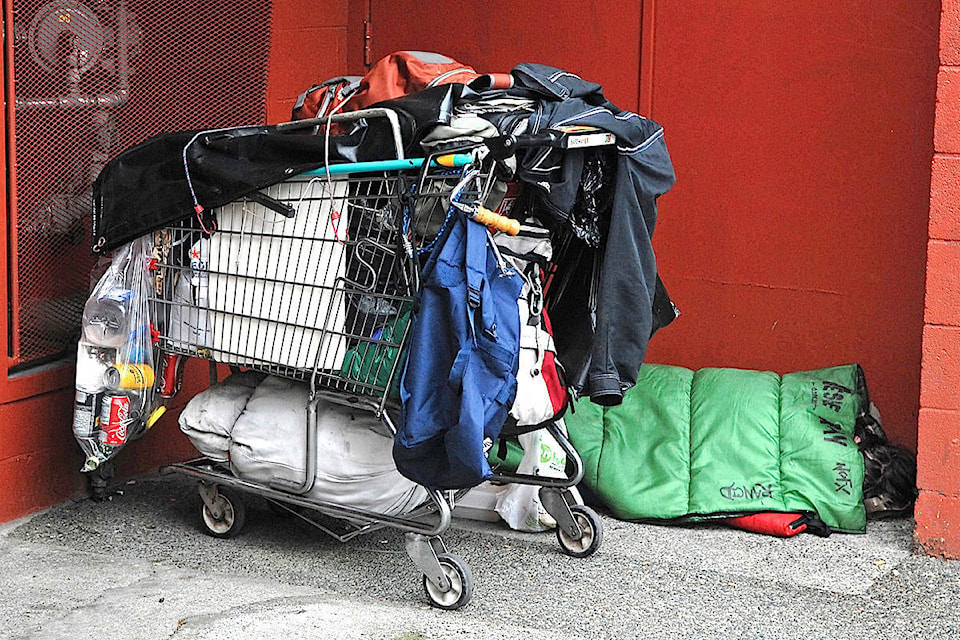Port Alberni’s most recent homeless count shows a smaller number of people in the community are experiencing homelessness, but more of them are struggling with various health concerns.
The 2021 homeless count recorded 125 people in Port Alberni who identified as experiencing homelessness, compared to 147 in 2018.
While there were fewer people experiencing homelessness, organizer Marcie DeWitt said the number of vulnerable people was higher.
“The data showed a significantly higher proportion of individuals who had multiple health concerns,” she explained.
Eighty-eight percent of respondents said they were struggling with addiction, while 61 percent were struggling with a mental health issue and 50 percent were struggling with another medical condition.
The count also showed that 65 percent of people experiencing homelessness in the community identified as Indigenous, which is an increase from 2018. This is disproportionate, said DeWitt, as Indigenous people only make up 17 percent of the general population (according to the 2016 census).
Port Alberni was originally scheduled to hold a count in early 2020, but this had to be postponed due to COVID-19 restrictions. The count was rescheduled and took place over the night of April 6, 2021 and the day of April 7, 2021.
“This year was a little more challenging,” said DeWitt. “Organizing for 2021 did definitely have some barriers—it was more challenging to figure out how to ensure everyone’s safety while we’re doing the count.”
As a result, the count relied on a number of different organizations—such as the Bread of Life, Salvation Army, KUU-US Crisis Line Society, Port Alberni Friendship Center and Canadian Mental Health Association, along with others—to interview survey respondents, instead of community volunteers.
Fifty-eight percent of respondents said they were sheltered (meaning they had no fixed address, but were staying in homeless shelters, hospitals, jails or detox facilities), while 42 percent were unsheltered (meaning they were couch surfing, living outside or living in their vehicles).
Most of the respondents (74 percent) were adults between the ages of 25-54, but 57 percent said they had experienced homelessness for the first time as a youth.
The respondents were fairly evenly divided between men (56 percent) and women (44 percent).
There is a misconception in Port Alberni that people experiencing homelessness are travelling here from other communities. But the data shows this is not true. Ninety-five percent of respondents had been in the community for at least one year, while 73 percent of respondents said they had been in the community for 10 years or more.
“That is a pretty high proportion,” said DeWitt.
The province funded homeless counts in 16 communities across B.C. in 2020 and 2021, including Port Alberni. The full provincial report has not been released yet, but DeWitt says she expects it to be released “any day.”
The data from the count will be used by the province and BC Housing to make funding decisions and inform community programming, said DeWitt.
The results can be found at www.bchousing.org.
